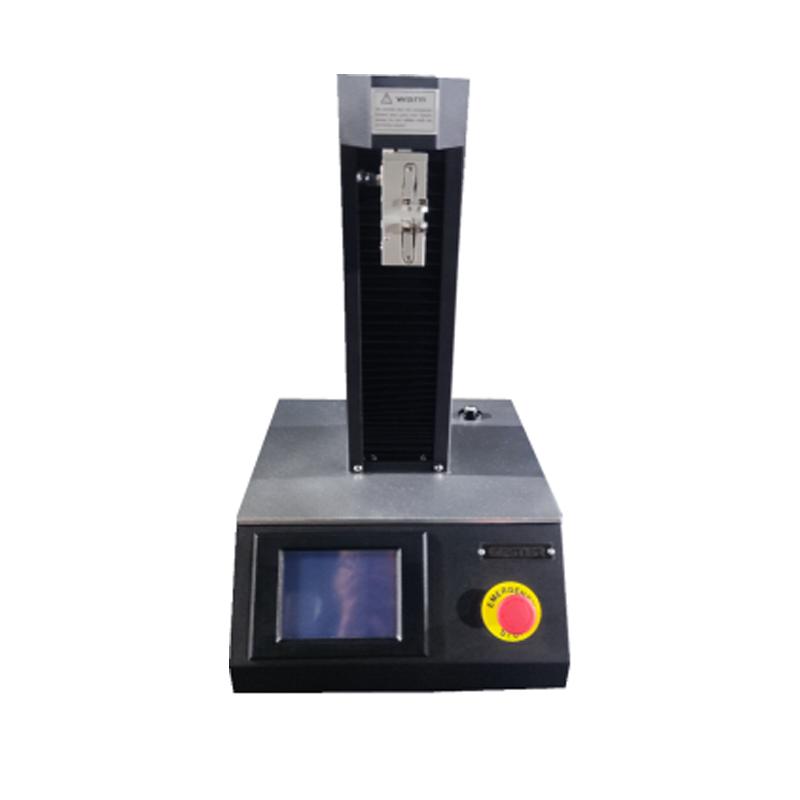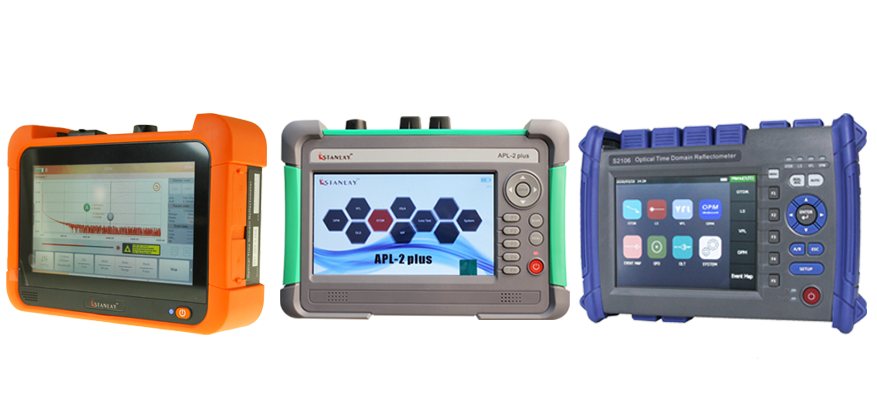Next-gen innovations in fiber measurement and its impact on global supply chains
A Comprehensive Overview to Optical Measurement System for Fiber Analysis
When it involves fiber evaluation, recognizing optical dimension systems is crucial for reviewing efficiency and making sure high quality. You'll explore necessary strategies like interferometry and spectroscopy, which aid you determine crucial parameters. There's even more to it than just these methods; understanding attenuation dimension methods can considerably influence your network's efficiency. As you navigate via this guide, you'll discover understandings that might transform your technique to optical fiber.
Recognizing Optical Measurement Systems
When you check out optical dimension systems, you'll discover they're necessary for examining fibers with precision. These systems utilize light to analyze different attributes of fibers, including diameter, refractive index, and harmony. By utilizing techniques like interferometry and spectroscopy, you can acquire important insights right into the fiber's properties.You'll discover that these systems are created to decrease errors and improve accuracy, making sure reliable data for your evaluation. Different arrangements, such as single-mode and multi-mode systems, deal with details fiber kinds, enabling you to select the best fit for your needs.Moreover, the integration of advanced software program tools helps you translate the information efficiently, making it simpler to determine any type of incongruities or problems. As you check out much deeper into these dimension systems, you'll appreciate just how they enhance the analytical process and boost the total top quality of fiber manufacturing and screening.
Secret Specifications for Fiber Analysis
Secret criteria for fiber analysis play an important duty in identifying the high quality and performance of optical fibers. When you review a fiber, you'll want to concentrate on qualities such as depletion, transmission capacity, and modal diffusion. Depletion determines the loss of signal toughness as light travels via the fiber. A reduced depletion worth indicates much better quality and longer transmission distances - optical measurement system.Bandwidth describes the data-carrying ability of the fiber and is vital for high-speed communication. You'll require to assess the bandwidth to ensure it fulfills your application requirements. Modal dispersion, which arises from the different rates at which light trips via different settings in multimode fibers, affects signal quality
Methods for Attenuation Measurement

Data transfer and Its Effect on Efficiency
Understanding bandwidth is important for enhancing fiber performance, as it directly affects the quantity of information that can be transmitted over a network. Greater transmission capacity suggests you can send out more details at the same time, permitting faster interaction and better general performance. When you're functioning with fiber optics, it's crucial to take into consideration how bandwidth communicates with fiber qualities, such as core size and material properties.If the transmission capacity is restricted, you may experience information loss or slower rates, influencing your applications. Additionally, various sorts of fibers can sustain differing transmission capacity levels, so it is necessary to choose the right fiber for your specific needs.You must likewise keep in mind that environmental factors, like temperature and exterior disturbance, can impact transmission capacity. By understanding these elements, you can make informed choices to boost your fiber optic systems, guaranteeing dependable and effective information transmission.
Refractive Index Measurement Approaches

Total Inner Representation
Complete interior reflection (TIR) serves as an essential principle for gauging the refractive index of fibers. When light journeys from a denser medium to a less dense one, it can just be totally shown if the angle of occurrence exceeds a particular limit, called the essential angle. This sensation enables you to establish the refractive index by assessing the angles at which light shows or refracts. By using a configuration that routes light into a fiber and gauges the resulting angles, you can compute the refractive index precisely. Recognizing TIR not just improves your fiber analysis yet also improves the Discover More Here style and efficiency of optical systems. So, leveraging TIR can lead to much more effective fiber-based applications.
Interferometric Methods
Structure on the principles of total inner representation, interferometric techniques supply an effective methods for gauging the refractive index of fibers with high precision. These techniques exploit the disturbance patterns developed when beams split and recombine after traveling different courses. You can use configurations like the Michelson or Mach-Zehnder interferometer to analyze phase changes created by changes in refractive index. By meticulously calibrating your system and evaluating the resulting fringes, you can identify the refractive index with impressive precision. It's vital to keep secure environmental problems to minimize errors. With these techniques, you'll enhance your understanding of fiber properties, causing much better efficiency in different applications, from telecoms to sensor innovation.
Modal Diffusion and Its Relevance
Modal diffusion refers to the spreading of light pulses as they take a trip through a fiber, which can impact the general efficiency of the system. You'll see that this sensation can bring about indicate distortion, affecting information transmission rates and high quality. Recognizing its value is essential for maximizing fiber optic styles.
Interpretation of Modal Dispersion
In fiber optics communications, modal dispersion plays a considerable duty in figuring out signal quality and transmission rate. It happens when different light modes travel at differing speeds through the fiber. Considering that each setting has distinct courses and features, they can come to the getting end at different times. This time distinction can cause indicate spreading and distortion, which can degrade the total performance of the communication system. You may come across modal diffusion largely in multimode fibers, where the numerous paths of light aggravate the problem. Comprehending modal dispersion is vital for optimizing fiber designs and ensuring that your communication systems run successfully, preserving the honesty of the transmitted signals over longer ranges.
Effects on Fiber Efficiency
Recognizing modal diffusion helps highlight its effects on fiber efficiency. This phenomenon happens when different modes of light travel at varying speeds within the fiber, causing signify dispersing gradually. As you analyze optical fibers, you'll observe that enhanced modal dispersion can significantly weaken signal discover this info here top quality, causing minimized transmission capacity and longer transmission distances. In useful terms, this means your data can get here distorted or delayed, influencing overall communication performance. To reduce these results, you might consider making use of single-mode fibers, which decrease modal dispersion. By choosing the best fiber type and comprehending how modal diffusion influences efficiency, you can boost transmission quality and warranty dependable information transfer in your optical dimension systems.
Devices and Technologies for Optical Measurements
When it comes to optical dimensions, several cutting-edge devices and technologies go to your disposal to boost fiber evaluation. You'll locate fiber optic testers, which analyze signal high quality and performance, vital for preserving optimal network effectiveness. Optical time-domain reflectometers (OTDRs) are critical for situating mistakes and determining loss over distances, offering in-depth insights right into fiber stability. Furthermore, spectrometers can examine light ranges, assisting you determine material residential or commercial properties and composition.Don' t ignore the relevance of imaging systems, like digital microscopes, that allow you to visually inspect fiber surfaces for problems. Also, take into consideration utilizing polarization analyzers to gauge tension and stress in fibers, which is important for understanding their actions under different problems. By leveraging these tools and innovations, you can greatly improve your fiber analysis procedures, making sure reliability and high efficiency in your optical networks.
Regularly Asked Questions
What Are the Prices Connected With Optical Measurement Solutions?
The costs connected with optical measurement read this post here systems can vary substantially. You'll need to review devices rates, upkeep costs, software application licenses, and potential training expenditures. Budgeting carefully will help you prevent unforeseen monetary obstacles down the line.

Exactly How Frequently Should Fiber Evaluation Be Carried Out?
You should carry out fiber evaluation frequently, usually every 6 months or after substantial adjustments in the atmosphere (fibre testing equipment). This guarantees perfect performance and helps determine possible issues prior to they affect your system's efficiency and reliability
Can Optical Measurement Systems Be Calibrated in the house?
Yes, you can adjust optical dimension systems in your home, however it needs precision. Make sure you follow the producer's guidelines, make use of proper calibration requirements, and verify your outcomes to assure precision in your measurements.
What Industries Typically Utilize Optical Measurement Equipments?
You'll locate optical measurement systems commonly made use of in sectors such as telecommunications, production, healthcare, and study. They're essential for quality assurance, fiber analysis, and ensuring specific dimensions in various applications, enhancing effectiveness and precision throughout industries.
Exist Any Type Of Safety Worry About Optical Measurement Solutions?
Yes, there are security worry about optical dimension systems. You ought to always wear protective glasses to protect your eyes from extreme light sources and warranty appropriate training to deal with equipment securely and prevent mishaps.